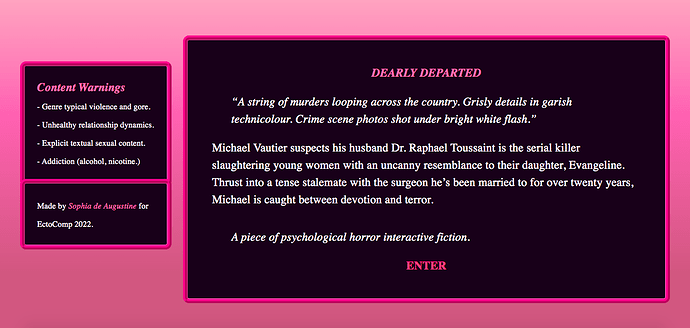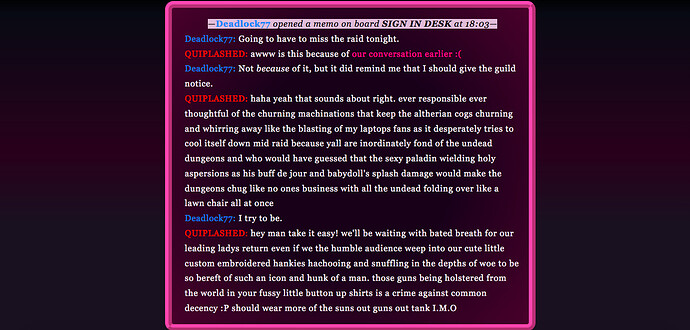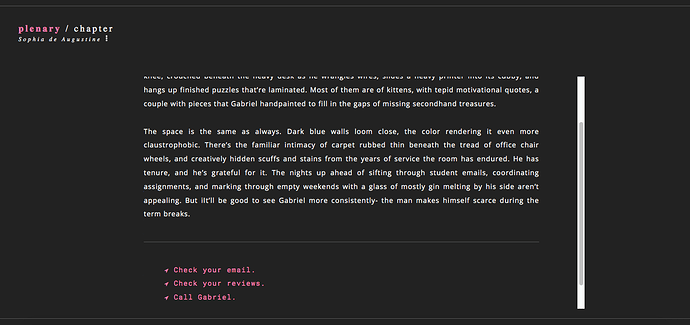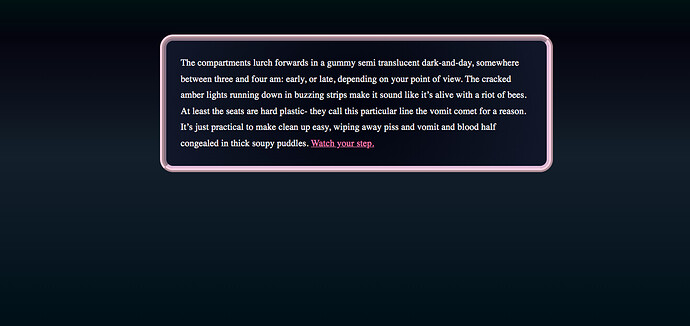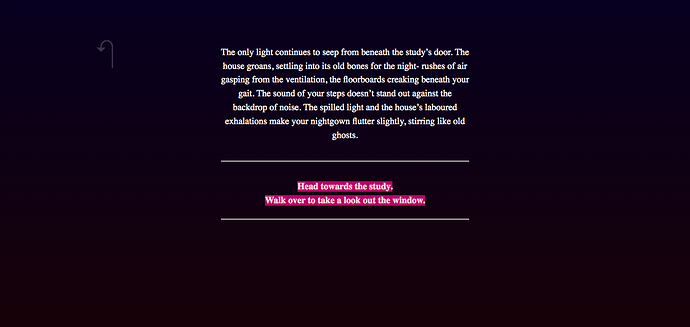I had this quote of Milo’s up to note my own experience–one person one year left my entry for last, specifically mentioning the cover art made them push it back out of fear of a stinker. Which I think jibes with his general point if not the specific instance.
I generally don’t need or want too much in terms of aesthetics and if I sense I even might be pulled by an excess of aesthetics, I back off. (Full disclosure: I’m one of those cranks who usually mute sounds, and I may even edit the Twine to avoid timed text.)
The thing is … cover art’s something I want to do, but I don’t want it to be super high priority. Maybe I’m being lazy when I say I don’t want to force too much of my own vision on the player. And I’m more bummed if, say, something stylish promises a lot and gives a little, or if someone puts a feature in just to say “hey, look, I can tinker with things.” An extreme straw man would be Comic Sans font. But of course if someone puts care into the aesthetic bits, it often shows in other places.
Good point, though I think in some cases, a person only has so much time. If someone has a great idea they can throw together in a month, and it’s missing a few bells and whistles, I’m okay with that.
I’ve found it’s tough to change gears even for a half hour or so. And so often, someone who is conscientious about needing to make changes says – oh, hey, wait, this could be changed, too, and this as well. So I generally have a few questions to address to make sure I don’t just do the bare minimum. Because people may point that out, too.
Maybe I sympathize too much with someone willing to add an odd feature and recognizing how it’s never as little work as you hope, because I’ve been there. And I don’t mind if an author plays to their strengths.
And yet at the same time there’ve been times a default Twine work has me on edge a bit. Usually there’ll be some interesting detail in the writing to pick me up and help me get going.
